Introduction: Endometrial or uterine polyps can appear at any age, but usually occur after 40 years. The treatment might involve watchful waiting, hormonal medication, or surgical removal, as the symptoms typically recur once the medications are stopped. Homeopathy may benefit such patients.
Case report: In this case report, we present the case of a 50-year-old woman diagnosed with uterine polyp that benefited with individualized homeopathy. The outcome was favourable in less than 4 months, with complete recovery of normal menses without any recurrence of gynaecological symptoms in 3 years of follow up.
Conclusions: This case report recommends that scientific investigation is needed to establish the relevance of individualised homeopathy in cases of uterine polyp.
Keywords: Uterine polyp, Sepia, Metrorrhagia, Classical homeopathy
Introduction
The endometrial or uterine polyp (UP) is a mass of tissue that develops from the mucosal layer of the uterine cavity. Uterine polyps are not rare. The prevalence of UP in the general population is 8%. A UP can be attached to the endometrium with a wide base – sessile polyp, or it can be attached to the uterus by means of a pedicle and then is called a pedunculated polyp. The size of polyps varies from a few millimeters to even a few centimeters.
The exact causes of the appearance of UP have not been established yet, but it is believed that the fluctuation of hormone levels has a role in their development. It has been noticed that they tend to appear when the level of oestrogen is higher.
And there are several other factors that can increase the risk of the formation of endometrial polyps, such as, age: between 40 and 49 years, menopausal status: pre-menopause and menopause, BMI: obesity, high blood pressure, chronic inflammation of the endometrium, hormone replacement therapy, specific drugs for the treatment of breast cancer, family history of Lynch syndrome or Cowden syndrome.
Uterine polyps most commonly occur in women between the age of 40 and 65, but there have also been cases of uterine polyps in 12-year-old girls as well as in 81-year-old women. So we may conclude that they can appear at any age. In cases of abnormal bleeding, the incidence of UPs is estimated to be 10 to 30%.
In many cases, the UPs don’t produce any symptoms, so women don’t go to the doctor. Although uterine polyps are almost always benign, malignancy can occur in about 1% of the cases.The symptoms of UP are vaginal bleeding after menopause, bleeding between periods, frequent, unpredictable periods whose lengths and heaviness vary, very heavy bleeding, and infertility; and yet some women have only light bleeding or spotting.
The conventional treatment for UPs might involve watchful waiting, hormonal medications (certain hormonal medications including progestin and gonadotropin-releasing hormones that may lessen symptoms of the UPs), but only for a short period of time because when the treatment is stopped, the typical symptoms reappear and surgical removal is followed. If a uterine polyp contains cancer cells, the approach is changed to oncological one.
More women are inclined towards homeopathy for UPs and metrorrhagia, due to the information available about the cured cases with homeopathy, and to avoid the myriad side effects of conventional management. The final surgical treatment is a radically invasive method and therefore avoided by women.
Case report:
A 50-year-old woman, a specialist physician, underwent diagnostics on 14 November 2019, and 2 December 2019 after a complete gynaecological investigation, and was diagnosed with Uterine Polyp. She sought homeopathic treatment for the same.
Fig.1 Transvaginal Ultrasonography at diagnosis showing hyperplasic endometrial polyp, 25X16 mm
The woman was married and had no children because of her husband’s sterility. She previously had a right ovarian cyst with a diameter of 7-8 cm diagnosed 10 years before which had resolved with homeopathic treatment. Important to mention is that 15 years before, she had significant emotional stress and after this episode, she had no high fevers over 39oC, and an ovarian cyst appeared.
Family history: her mother had hypothyroidism and mild high blood pressure and her father died due to chronic kidney failure at 71 years age. She had no family history of UPs.
Homeopathic case taking:
23 January 2020 – FIRST CONSULTATION:
The patient complained of metrorrhagia for a year, in small amounts, intermenstrual, and after intercourse, with red or brown bleeding. She also complained of slightly prolonged periods with a small amount of bleeding for another 4-7 days after the usual menstrual period which usually lasted for 3 days.
She had profuse yellow leucorrhoea on a daily basis. She also complained of pain in the right thumb, ameliorated by motion. Previously she did not have any kind of treatment for the polyp.
Mental-emotional symptoms: irritability, critical, weeping easily, claustrophobia, anxiety about her health and anxiety about the health of her adopted child. General symptoms were coldness of extremities, thirstless, desire to sit, very low sexual desire, constipation and amelioration with motion and fresh air. Sometimes in the morning, the urge to stool after getting out of bed and moving.
The case was repertorised for these symptoms (Fig 2)
Fig. 2. Repertorisation Vithoulkas Compass, First Consultation
Prescription: On the basis of the totality of symptoms, the first prescription was Sepia 30 CH, once a day for 14 days.
Level of health analysis: The patient had two to three respiratory acutes every year, with mild fever of 37.5-38.5oC. Last high fever of more than 39oC occurred 15 years ago, (before the emotional trauma of conflict at her workplace, which resulted in her leaving the job). This indicates that the patient was previously in group A lower level and had slipped to Group B upper level, of Level 4 probably.
Follow up
The follow up of the case is provided in the table below
| Date | Symptoms | Interpretation | Prescription |
| 03/02/2020 | After the first dose of Sepia 30CH, the sleep improved a lot and she had pleasant dreams and also the peripheral circulation significantly improved, relieving the coldness of extremities. The irritability decreased and the patient became calmer and quieter.
The metrorrhagia decreased by 95%, now she had very slight brown discharges occasionally. After a few days, metrorrhagia reappeared but in a mild form. Yellow leucorrhoea persisted. The pain in the right cheek also persisted. New symptoms appeared in this period: abdominal distention after eating, nasal dryness with nasal crusts in the morning, dull pain in the right hypochondrium, and oversensitivity to noise. |
Considerable improvement occurred after Sepia 30, but a relapse started in the last few days, with many symptoms of the same remedy. An increase in the potency is indicated | Sepia 200 CH, once a day for 3 days.
|
| 15/02/2020 | The patient reported that the metrorrhagia had stopped, and the general condition had remarkably improved, but the pain in the right thumb persisted. | The remedy is still acting | Wait |
| 21/02/2020 | Short intermittent bleeding reappeared, every 4 days, lasting a few minutes, with pain and the premenstrual syndrome. Discharge was changeable, brownish bloody or watery. Constipation improved a lot. The pain in the joint of the right thumb persisted.
A new symptom appeared: skin eruption on the face with itching, from time to time. The level of energy of the patient was good until late evening. |
Large improvement occurred and a relapse of the main symptoms occurred, the symptomatic picture of Sepia was maintained. Therefore, indicating need for increase in potency | Sepia 1M, one dose. |
| 12/04/2020 | The patient reported that many improvements occurred in the last two months. The bleeding became rare and the patient did not return until two days prior – persistent bleeding for two days with slight pelvic pulling pain associated with slight sacro-iliac pain on both sides, worse on the left side. | There was considerable improvement but after 7 weeks the relapse began but no change in picture was perceived. The homeopaths decided to repeat the remedy. | Sepia 1M, one dose. |
| 13/04/2020 | Metrorrhagia was persistent, with bleeding all day, but very little. Some mucosal remnants appeared with small blood clots, accompanied by menses-like pain, even though it was the 16th day of her menstrual cycle. The energy level of the patient was very good, the mental-emotional status was very good, and the patient was calm.
At 8 p.m. on 13 April, the metrorrhagia suddenly increased with significant bleeding with large clots accompanied by a slight pelvic discomfort, without dysmenorrhea. |
24 hours after the remedy, the main symptom (metrorrhagia) underwent rapid changes in a short time, so the homeopaths decided to wait and closely monitor the evolution | Wait |
| 14/02/2020 | Throughout the day, there was increased metrorrhagia with considerable bleeding similar to menses, without any other discomfort, and with a good level of energy.
At 11.30 p.m., the spontaneous per vaginal discharge of the uterine polyp measuring 2cm occurred (Fig 3). It was taken over for subsequent histopathological examination: hyperplastic endometrial polyp with the appearance of simple glandular hyperplasia, without nuclear atypia.
After the removal, metrorrhagia decreased instantly, almost completely, continuing as a pink discharge for two days, accompanied by slight pelvic discomfort. |
This was an excellent development. | Wait |
| 14/05/2020 | Normal menses one month after the discharge of the polyp. No metrorrhagia
No pain in the right thumb Patient was better mentally/emotionally: the irritability, the weeping, the tendency to criticise and the anxiety about her health and about the health of her adopted child decreased considerably. The libido had improved too. |
This is good development indicating patient’s issues are well resolved | Nil |
| 10/01/2023 | 3 years after the spontaneous discharge of the uterine polyp, the patient has normal menses, once in 27-28 days, without dysmenorrhea and without any symptoms in the gynaecological area. No conception occurred however, due to azoospermia in the husband | Nil |
Fig. 3. Uterine Polyp discharged spontaneously per vaginum
Discussion
Uterine Polyps (UP) are a chronic pathology that appears in women over 40 years age, and those who have not given birth seem to have an additional risk. This pathology is usually treated with surgical intervention after a short time of hormonal therapy and there are many women who avoid this conventional treatment.
In this case of uterine polyps, we observed an excellent response to homeopathic treatment, in less than 4 months, even though apparently of a lower health level, having no high fever for more than 15 years. However, the fact that this patient needed a single homeopathic remedy during the whole period of homeopathic treatment, showed that the defence was quite strong, a fact confirmed by the successful spontaneous discharge of the uterine polyp, with resolution of all the gynaecological symptoms and achieving normal balance in mental-emotional level.
Conclusion
Classical individualised homeopathic treatment was beneficial in this case of uterine polyp with betterment on all levels. The relevance of classical homeopathy in seemingly surgical cases must further be investigated scientifically.
If you would like to learn about more positive articles in classical homeopathy, here is an excellent list: https://www.vithoulkas.com/research/positive-articles

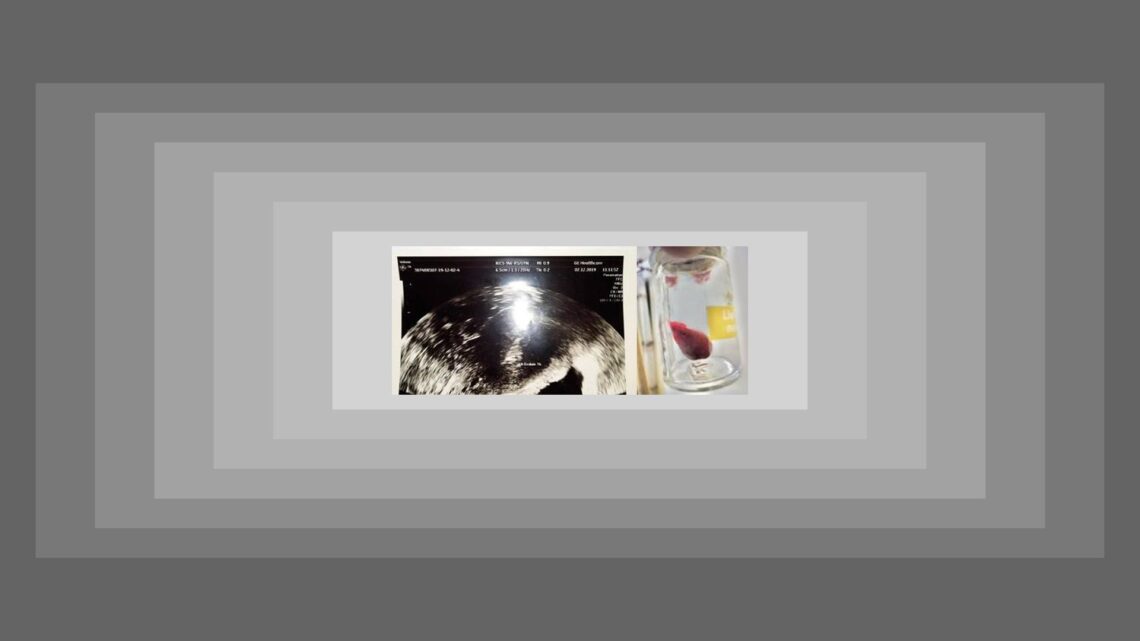

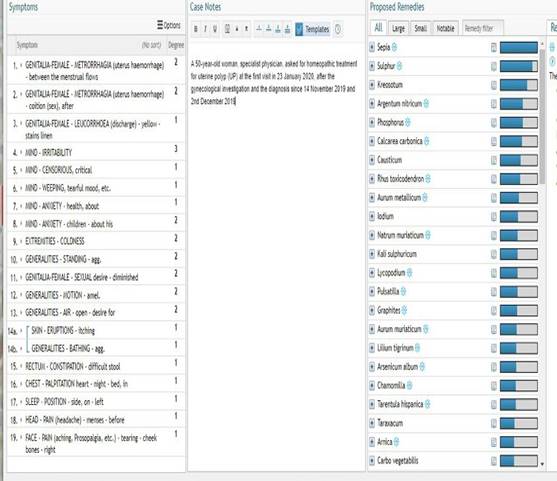
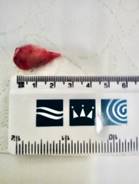
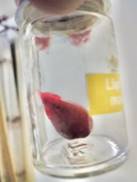
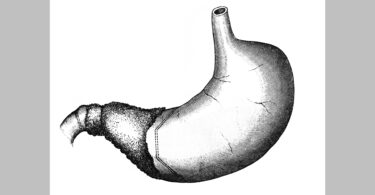



Classical homeopathy is a medical science with great results in hands of a professional homeopath. This is a very good article, a strong argument to start large scientific studies in gynecological pathology. Congratulations, dear dr Sabina Negrut!